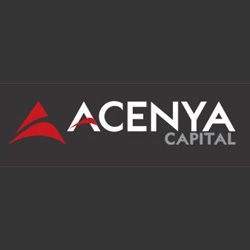Binance USD (BUSD) has emerged as a significant player in the world of decentralized finance (DeFi) and yield farming. In this article, we will explore the role of Binance USD in DeFi yield farming and some strategies for better results. Minimize the risks in the volatile DeFi or crypto market using chrominator.io and make informed decisions always.

Role of Binance USD in DeFi Yield Farming
In the world of decentralized finance (DeFi), Binance USD (BUSD) plays a crucial role as a stablecoin for yield farming. Yield farming involves users lending or staking their crypto assets to earn additional rewards in the form of tokens. BUSD, as a stablecoin pegged to the value of the US dollar, provides stability and mitigates the volatility associated with other cryptocurrencies. This stability makes it an attractive option for participants in the DeFi ecosystem.
One of the key advantages of using BUSD in yield farming is its predictability. Since its value is tied to the US dollar, users can anticipate the returns they will receive without having to worry about the fluctuations that can occur with other cryptocurrencies.
Moreover, BUSD is widely accepted in various DeFi protocols and platforms. Many yield farming projects support BUSD as one of the available tokens for participants to use. This widespread acceptance enhances the liquidity of BUSD and makes it easier for users to access and utilize in their yield farming activities.
Additionally, BUSD offers a bridge between traditional finance and the decentralized world of DeFi. As a regulated stablecoin, BUSD complies with relevant financial regulations, providing a sense of security and reassurance to users. This regulatory compliance can be particularly important for users who are more risk-averse and prefer to engage with platforms and assets that adhere to established regulatory frameworks.
Several yield farming platforms specifically cater to BUSD holders, offering exclusive opportunities and rewards for those using BUSD in their farming strategies. These platforms provide users with various options to improve their yield and diversify their portfolios. By leveraging BUSD, users can explore different yield farming strategies while minimizing the risks associated with volatile cryptocurrencies.
Binance USD (BUSD) plays a significant role in DeFi yield farming. Its stability, wide acceptance, and regulatory compliance make it an attractive option for participants in the DeFi ecosystem. As the DeFi space continues to evolve, BUSD is poised to play an increasingly important role in shaping the future of decentralized finance.
Strategies for Yield Farming with Binance USD
When it comes to yield farming with Binance USD (BUSD), there are various strategies that participants can employ to improve their returns and manage their risks effectively. Understanding these strategies is crucial for yield farmers looking to make the most out of their BUSD holdings.
One common strategy is known as liquidity provision. In this strategy, users provide liquidity to decentralized exchanges (DEXs) by depositing BUSD and another token into a liquidity pool. By doing so, they earn fees generated from trading activities on the DEX. This strategy allows participants to earn passive income while also facilitating the smooth functioning of the decentralized exchange.
Another popular strategy is yield aggregation. Yield aggregators automatically allocate BUSD and other assets across different yield farming protocols to improve returns. These platforms use complex algorithms to identify the most profitable opportunities and optimize the allocation of funds. By utilizing a yield aggregator, users can save time and effort while earning optimal returns on their BUSD holdings.
BUSD can also be utilized in lending and borrowing protocols within the DeFi ecosystem. Users can deposit BUSD into lending platforms and earn interest on their holdings. Simultaneously, borrowers can utilize BUSD as collateral to borrow other assets. This strategy allows participants to generate passive income through lending while also gaining access to additional liquidity for their trading or investment activities.
Furthermore, yield farmers can engage in yield optimization strategies. These strategies involve using BUSD in combination with other tokens to take advantage of various farming opportunities. By carefully selecting the assets to stake or lend, yield farmers can increase their overall yield and diversify their portfolios.
Risk management is a crucial aspect of yield farming with BUSD. It’s essential to diversify investments across different protocols and platforms to mitigate the risks associated with a single project. Additionally, monitoring the security and reputation of the platforms chosen for yield farming is important to minimize the potential for hacks or scams.
Conclusion
In conclusion, Binance USD (BUSD) plays a crucial role in DeFi yield farming by providing stability, liquidity, and regulatory compliance. Its wide acceptance, along with various yield farming strategies, allows participants to optimize their returns and diversify their portfolios. As the DeFi space continues to evolve, BUSD is poised to contribute significantly to the growth and development of decentralized finance.

 Hot Features
Hot Features













